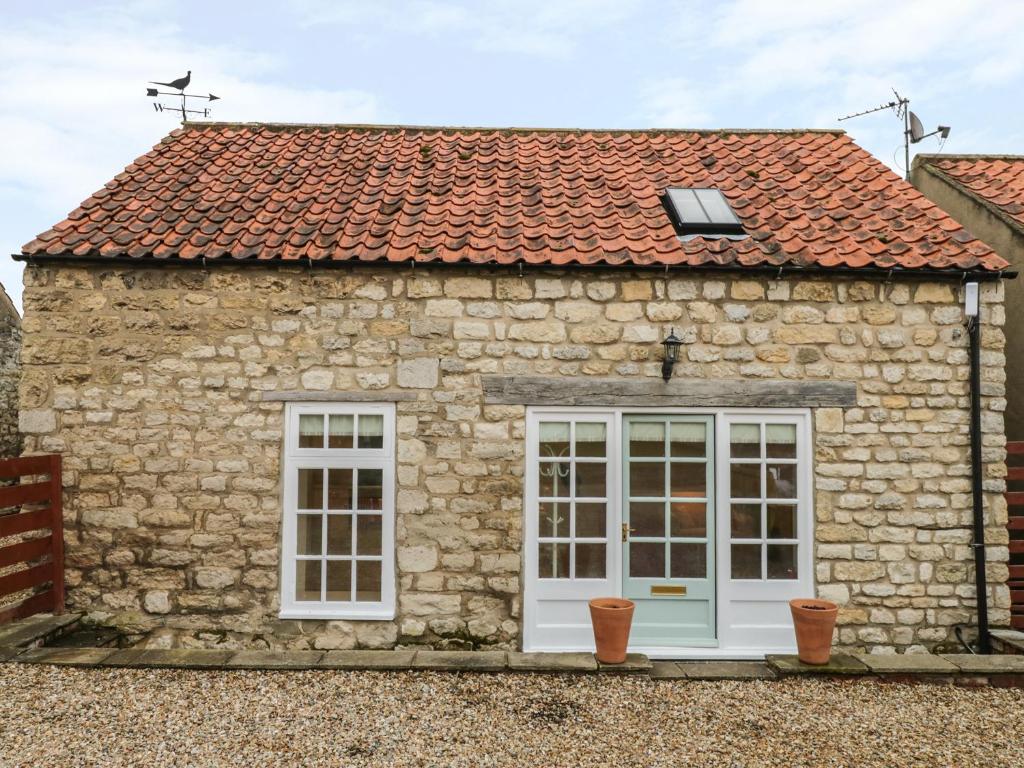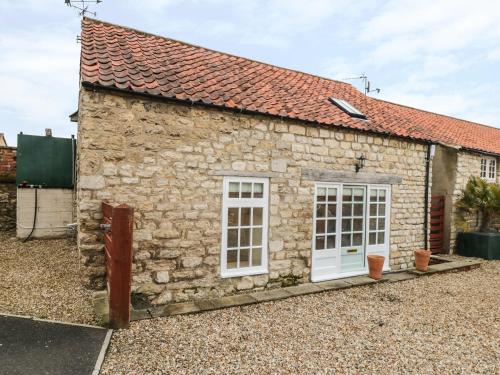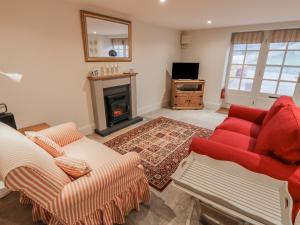Mentioned by premierinn.com
Attractions


"Students can find it right between the Castle Museum and the Jorvik Viking Centre. Clifford’s Tower offers visitors stunning panoramic views over Old York, thus making it the ideal starting point for any visit to the city. There’s plenty to discover here, including the remains of York Castle built by William the Conqueror, a prison and a royal mint."
"Clifford’s Tower offers stunning views of the city from it’s vantage point on top of a mound. The tower is what’s left of the York Castle which was built by William the Conqueror. 1 mile(s) from the Minster.Tower St, York, North Yorkshire YO1 9SA, United Kingdom"
"Seeing this amazing structure from the street is brilliant and free. It sits perfectly on top of its hill overlooking the city. It is almost all that remains of York Castle built by William the Conqueror and today is looked after by English Heritage"



"This guildhall in the city of York was one of the most important buildings in the medieval city. The majority of the Hall was built in 1357 by a group of influential men and women who came together to form a religious fraternity called the Guild of Our Lord Jesus and the Blessed Virgin Mary. The main part of the building consists of the Great Hall, the Undercroft and the Chapel."
"The Merchant Adventurers' Hall is a restored medieval guildhall dating from the 14th century. The Great Hall is Britain's largest timber-framed building still used for its original purpose. The hall is still used by the Company of Merchant Adventurers of the City of York, now a charitable organization."

"Stately homes may be two a penny in England, but you'll have to try pretty damn hard to find one as breathtakingly stately as Castle Howard, a work of theatrical grandeur and audacity set in the rolling Howardian Hills. This is one of the world's most beautiful buildings, instantly recognisable from its starring role in the 1980s TV series Brideshead Revisited and in the 2008 film of the same name (both based on Evelyn Waugh's 1945 novel of nostalgia for the English aristocracy)."
"Standing in the Howardian Hills to the west of Malton, Castle Howard is an outstanding example of English baroque, with a distinctive…"

"St Mary’s Abbey is a picturesque ruined Benedictine abbey in York, located in York Museum Gardens. Once the richest abbey in the north of England, it now tells the story of York’s influential ecclesiastical past, and its degradation through Henry VIII’s dissolution of the monasteries. The first church on the site of St Mary’s was built in 1055 and dedicated to St Olaf of Norway, and following the Norman conquest was refounded by King William Rufus in 1088 during his visit to York."
"Once the richest abbey in the north of England, St Mary's lies in what are now the York Museum Gardens, on a steeply-sloping site to the west of York Minster. The abbey dates back to 1086 and over time became the wealthiest monastery in northern England before it was dissolved by Henry VIII in 1539. Over the next 200 years, it fell into disrepair and was largely dismantled for its stone."
"The park also serves as a romantic backdrop to St. Mary’s Abbey… or what’s left of it. The monastery was first built in 1088 and was among the wealthiest and most powerful Benedictine monasteries in England. In the 1530s King Henry VIII banned all monasteries in England in 1530s and St. Mary’s gradually fell into the medieval ruins you can see today."


"Dean’s Park offers fantastic views, a great place to stretch out and enjoy a break during a busy day, as well as soft drink and ice cream refreshments available during summer. You may also want to view nearby York Minster. There is an admission charge for entering this cathedral but it doesn’t cost anything to take in the magnificent exterior!"
"Located on the North side of the Minster, Dean’s Park is a quiet, green oasis offering incredible views of the Gothic Cathedral and the Minster Library. Some ruins of a 12th-century cloister – probably from the Old Palace – are still standing. While it originally was accessible only to members of the church, today it’s open to the public."
"A beautiful place to soak in the sun and enjoy an ice cream cone, Dean’s Park offers beautiful views and plenty of green, open space. Spread out a blanket and enjoy stunning views of the Minster and its Chapter House."



"Even if you stand in the ground-floor off-licence (its stock of over 600 beers will leave you slack-jawed), it is quite possible not to notice that upstairs lies one of Britain's most idiosyncratic beer bars. Tucked into the exposed eaves of a 12th-century Norman house, decorated with animal skins and ancient taxidermy, the House of Trembling Madness is a tight, friendly squeeze where hop-heads linger over two cask ales (both from the wonderful Wild Beer Co on this visit), specialist draft Belgian beers and an amazing, ever-changing selection of bottled brews (on top of which, you can drink anything that is for sale downstairs, paying £1.25 corkage). If the staff can't surprise you with something – say, a Japanese Hitachino Nest Classic Ale – you've officially exhausted the possibilities of beer."
"Decked-out like a medieval drinking hall (all exposed beams, stuffed and mounted animal heads and pelts flung over old church pews), the House of Trembling Madness is primarily a specialist beer bar. It has several alluring craft beers on draught – various Brooklyn, Bad Seed, Black Jack and Great Heck beers on this visit – and it sits above one of Britain’s best-stocked off-licences (all bottles available to drink-in, corkage £1.25). So that drinkers can line their stomachs in style, HoTM also serves a repertoire of gutsy, filling hot dishes and picky platters."
"The House of the Trembling Madness is a great place to drink in York if you’re into quirky and unusual buildings. The original Trembling Madness is much smaller, quirkier and has a very odd charm to it, whereas the newly refurbished one is much bigger and has a classier vibe to it; it also has a shop downstairs where you can purchase your drinks for a fraction of the price and then take them upstairs to drink in the bar/restaurant!. Whichever one you visit, you’re sure to delight in its weirdness and enjoy wonderfully crafted drinks."

"Sultry in its own right, you'll find all the Hotel du Vin hallmarks inside this low-level, pale-rendered building: slate and wooden floors, charcoal-grey walls, moody black-and-white photographs, tan leather armchairs with splashes of cherry red and aubergine in cushions and footstools. This style continues to the rooms and many of the bathrooms have freestanding baths. The French brasserie-style dining-room is all terracotta and sage-green walls, semi-private side-booths framed by wool curtains and softly glowing brass table lamps; cooking is confident and portions are generous."


"The UK’s National Railway Museum in York is one of the world’s largest and free to enter!. A mecca for railway enthusiasts and a superb family attraction, the museum doesn’t just trace the history of Britain’s railways from the early 19th century through to the present, it also digs deep into the international history of rail. Historic British steam locomotives on display in the Great Hall include the Mallard and an exact replica of Stephenson’s Rocket (from which all locomotives can trace their roots)."
"The National Railway Museum in York is home to some of the country’s greatest feats of engineering, and tells the story of Britain’s railway innovation. The museum was founded in 1975 on the site of the former North York locomotive depot, where it still stands today. In the early days of locomotive transport, York was revered as the heart of the rail networks of the north."

"At DIG, you get to discover only the most exciting archaeological artefacts from the 2000 years of history hidden under the streets of York. Our four excavation pits are filled with Roman, Viking, Medieval and Victorian finds, so you can grab a trowel and dig up the clues that show how people lived in these times. DIG, St Saviour's Church, St Saviourgate, York YO1 8NN"

"A survivor of Yorkshire’s ancient fenlands, dating back 15,000 years, Askham Bog is considered one of the most ecologically diverse sites in the UK. The bog itself is made of boulder clay and fen peat, while the land around it is home to roe deer, foxes, newts and frogs. Plants include royal ferns, rare gingerbread sedge and whole rivers of water violets."

"Sealife Sanctuary at North Bay has long been a family favourite attraction housed within three distinct triangular buildings on the resort’s main headland and featuring a mix of indoor and outdoor marine exhibits. See seals, penguins, otters and more and this hands-on interactive underwater world. There’s plenty of opportunity for rock pooling and a host of year round children’s activities and events."

"Just south of the spa, the South Cliff Italian Gardens were plotted at the turn of the 20th century and sit on a terrace that bends with the contours of the cliff. In the Italian Renaissance style, the gardens have geometric flowerbeds, a lily pond topped with a statue of Mercury and two very ceremonious stairways climbing to shelters beneath pergolas dating to 1914. It’s all part of a long tapestry of open spaces, including a rose garden and a cliff-top path with wonderful vistas back to the castle, all equipped with stairways and the Cliff Lifts down to the beach."
"It has lots of flowers, well arranged in and around sitting areas. A good place to relax while walking around the South bay. Highly recommended to take some monkey nuts and feed the squirrels."




















